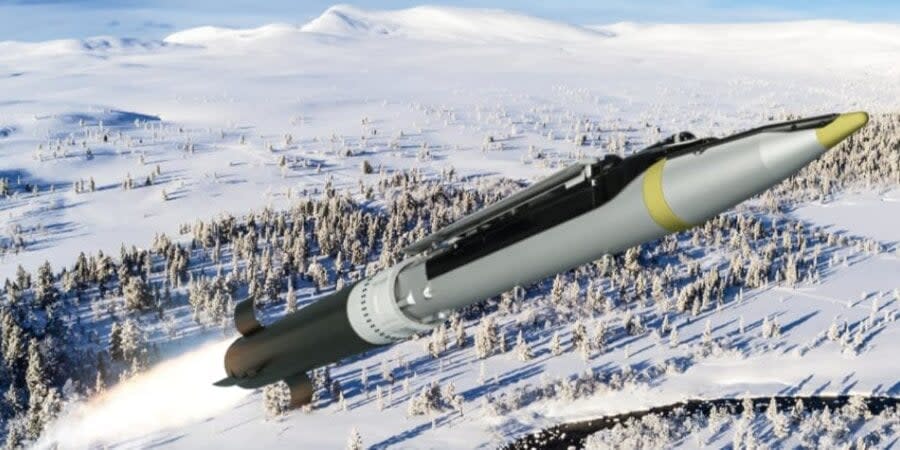New US aid package to include long-range rockets for the first time

"The longer range of the GLSDB glide bomb could allow Ukraine to hit targets that have been out of reach and help it continue pressing its counterattacks by disrupting Russia further behind its lines," the news agency writes.
Reuters pointed out that the proposal of Boeing, the manufacturer of these munitions, to transfer them to Kyiv was first reported in November, when it was expected that Ukraine would receive them by spring.
Here’s what you need to know about the GLSDB long-range rockets that will soon be in service in Ukraine.
Far-reaching effect
Back in December, the Commander-in-Chief of the Armed Forces of Ukraine, Valerii Zaluzhnyi, told the UK news magazine the Economist that the Russians had adapted to the longest-range weapon of the Ukrainian military, the GMLRS rockets, which can hit targets at a distance of 70 kilometers.
According to Zaluzhnyi, the Russians are now placing most of their command posts, communication centers, and ammunition depots deep in the frontline, where they cannot be reached by GMLRS rockets.
GLSDB rockets could help solve this problem. They have a less powerful warhead than GMLRS and ATACMS, but their 150-kilometer range will allow the Ukrainian Armed Forces to keep all targets in their sights up to the Crimean peninsula and deep into Donetsk and Luhansk oblasts.
GLSDB is a joint development of the U.S. company Boeing and Swedish company Saab. This munition can be launched from the HIMARS and M270systems already in place in Ukraine, as they use a Lockheed Martin M26 MLRS rocket section and a Boeing GBU-39/B small diameter bomb, wrote Italian military expert Thomas Theiner.
Possible drawbacks of GLSDB
The GLSDB has an inertial navigation system and uses GPS to focus on the target. After launching, the bomb deploys its wings and actually glides toward its target. This makes it much slower than conventional missiles, Theiner said.
Also, according to the expert, despite the claimed high accuracy of GLSDBs (up to 1 meter), they can only be used against stationary targets. To be able to hit moving targets, Ukraine needs a different modification ofthe munition – with a GBU-39B/B bomb that has laser guidance. For it to work, it needs to be guided by an airplane or drone, which will point a laser at the target. This would make Ukrainian equipment easy prey for Russian air defense systems.
Reuters wrote that GLSDBs are relatively new projectiles: their mass production was scheduled for "early 2023" at the earliest. Thus, the war in Ukraine will be their first serious test.
Main characteristics of GLSDB
GLSDBs have been in service since 2006.
The weight of the munition is 122 kilograms, and the weight of the warhead is 17 kilograms. This munition costs $40,000. This is significantly less than the cost of ATACMS, which stands at $1 million.
The GLSDB consists of a GBU-39 aerial bomb and an M-26 engine, standard for M270 and M142 HIMARS MLRS, connected by an adapter.
The munition has a diameter of 19 cm and a length of 1.8 meters.T
he range of the munition is increased due to the wings that unfold in the air.
The GLSDB uses an inertial guidance system and GPS guidance.
Read the original article on The New Voice of Ukraine

